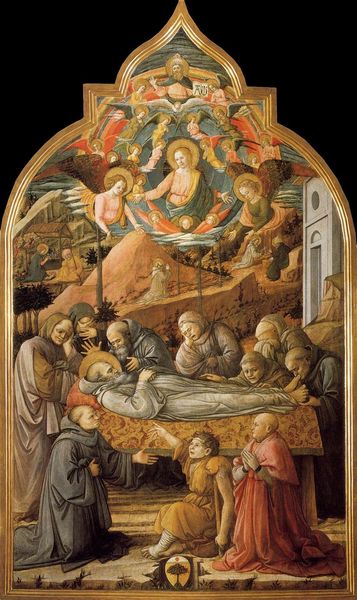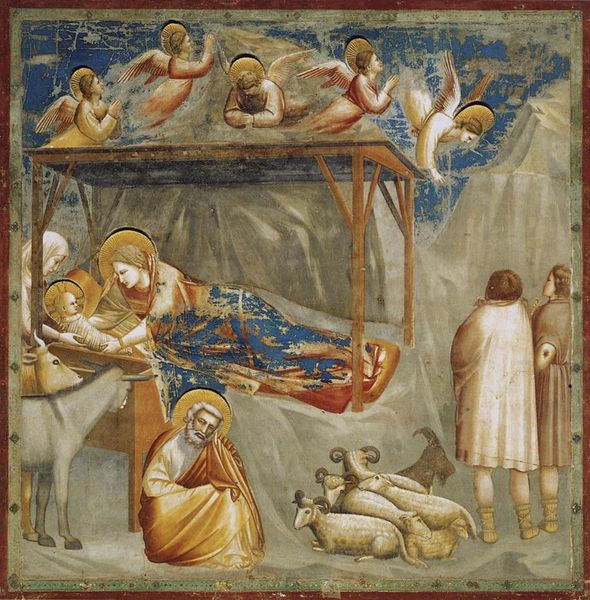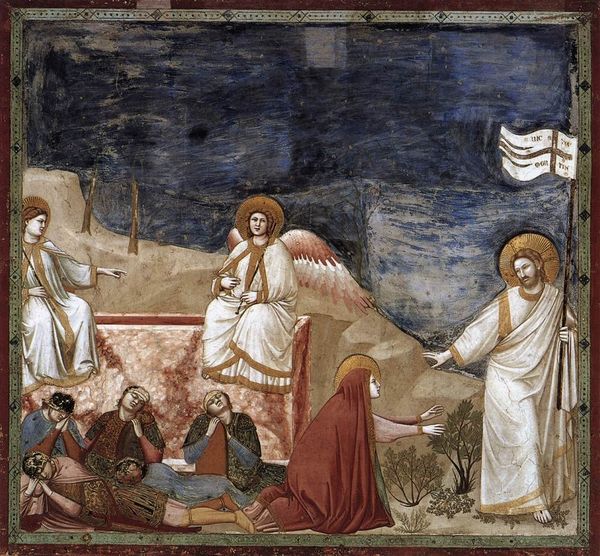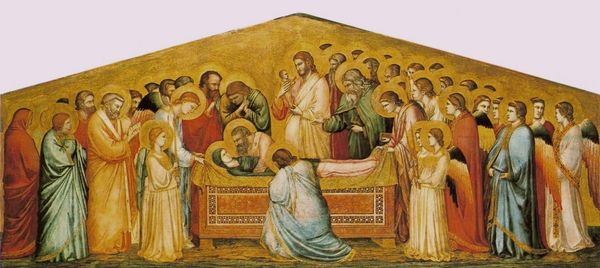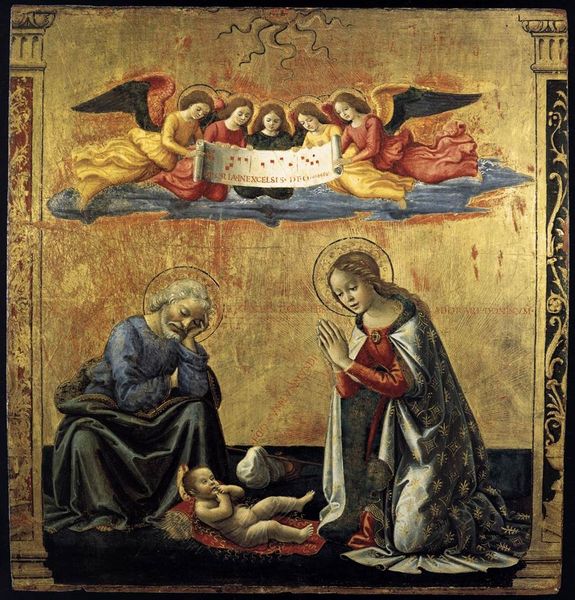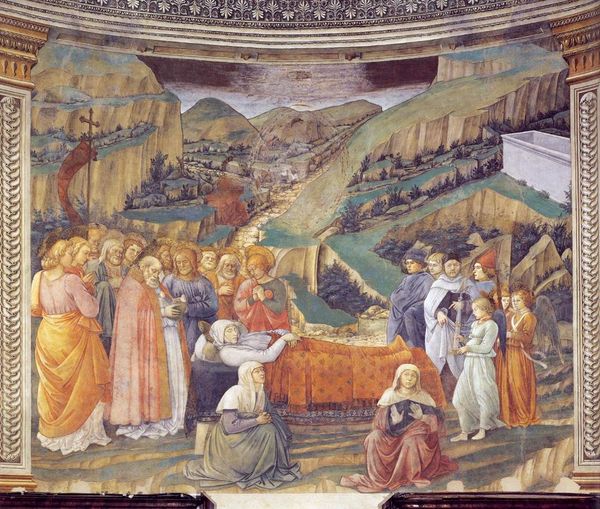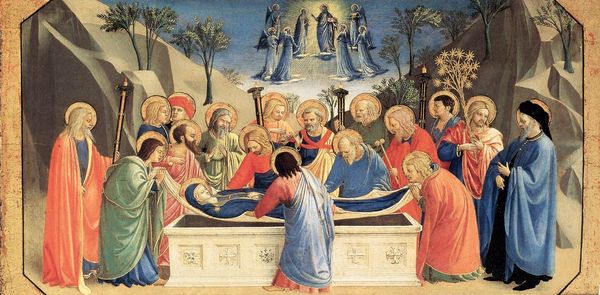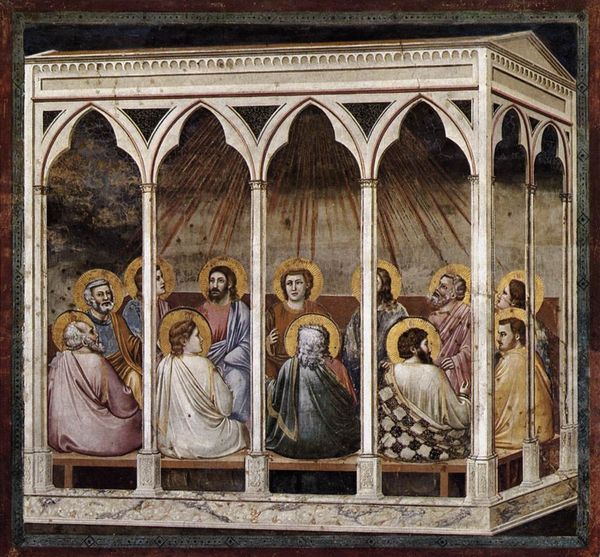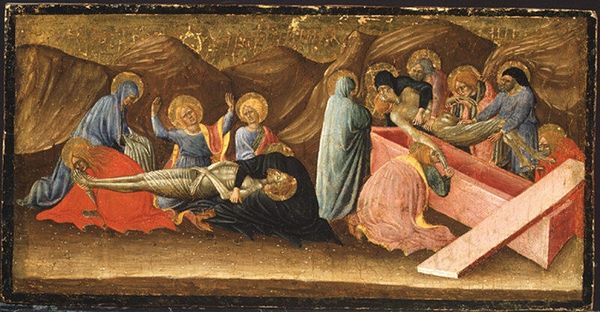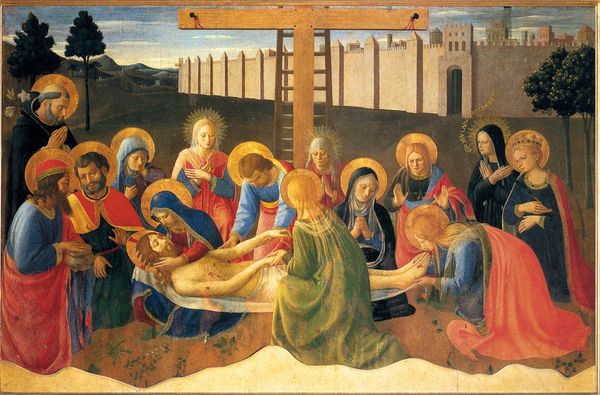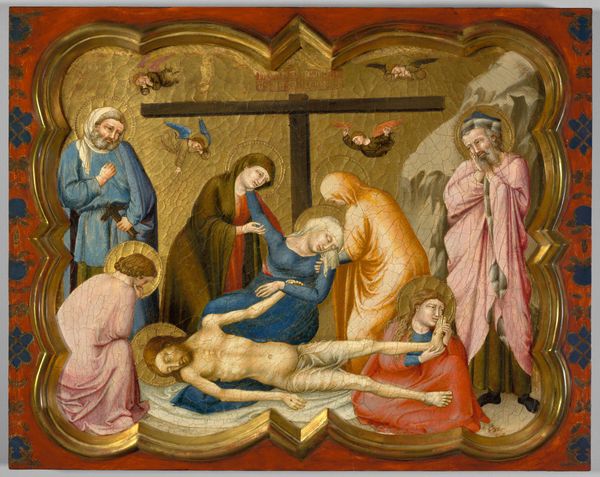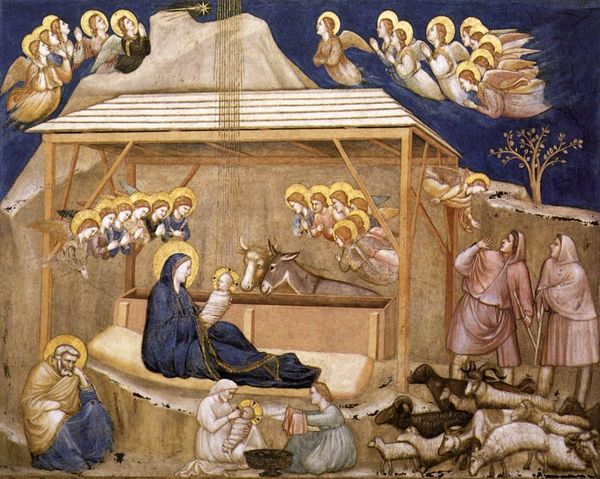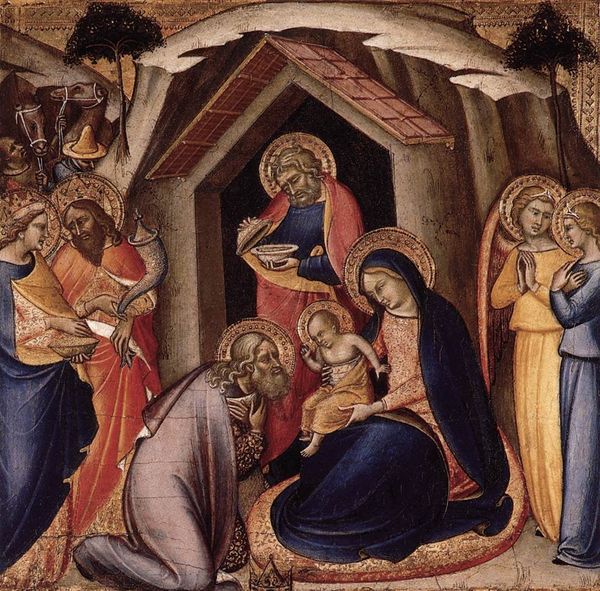
painting, fresco
#
medieval
#
narrative-art
#
painting
#
figuration
#
form
#
fresco
#
oil painting
#
christianity
#
line
#
history-painting
#
italian-renaissance
#
early-renaissance
#
christ
Dimensions: 200 x 185 cm
Copyright: Public domain
Editor: So, this is Giotto’s "Lamentation," painted as a fresco around 1306, found in the Scrovegni Chapel. I’m immediately struck by how intense the feeling of grief is – the figures seem so weighted down by sorrow. What do you see in this piece, especially regarding its emotional impact? Curator: I see a powerful statement about collective mourning, but also about the limitations placed upon female expression throughout history. Notice how the women cluster around Christ, their grief palpable. Their closeness to the body signifies an intimate understanding of loss. Giotto paints them as actively mourning, yet the formal structures of the time limited the narratives they could publicly construct or control. Editor: That's a really interesting point. I was just thinking about how Mary Magdalene is often portrayed at the feet of Christ, embodying both grief and devotion. Does her pose suggest anything specific in this context? Curator: Absolutely. Here, she is active, holding and caressing Jesus' feet, demonstrating physical engagement in Christ's fate and pain. It reflects the unique position women held as witnesses and sustainers, even while formal power remained beyond their grasp. It prompts questions about how displays of emotion intersect with both gender roles and the societal upheaval of the time. Editor: I’d never considered how power and emotional expression could be intertwined like that in a work from the early 14th century. So much to think about! Curator: Indeed. Giotto's "Lamentation" is a potent reminder that art is never created in a vacuum. By examining the prevailing societal constraints, we can glean a far deeper understanding of what this devotional image signifies for both its era and our own.
Comments
No comments
Be the first to comment and join the conversation on the ultimate creative platform.
